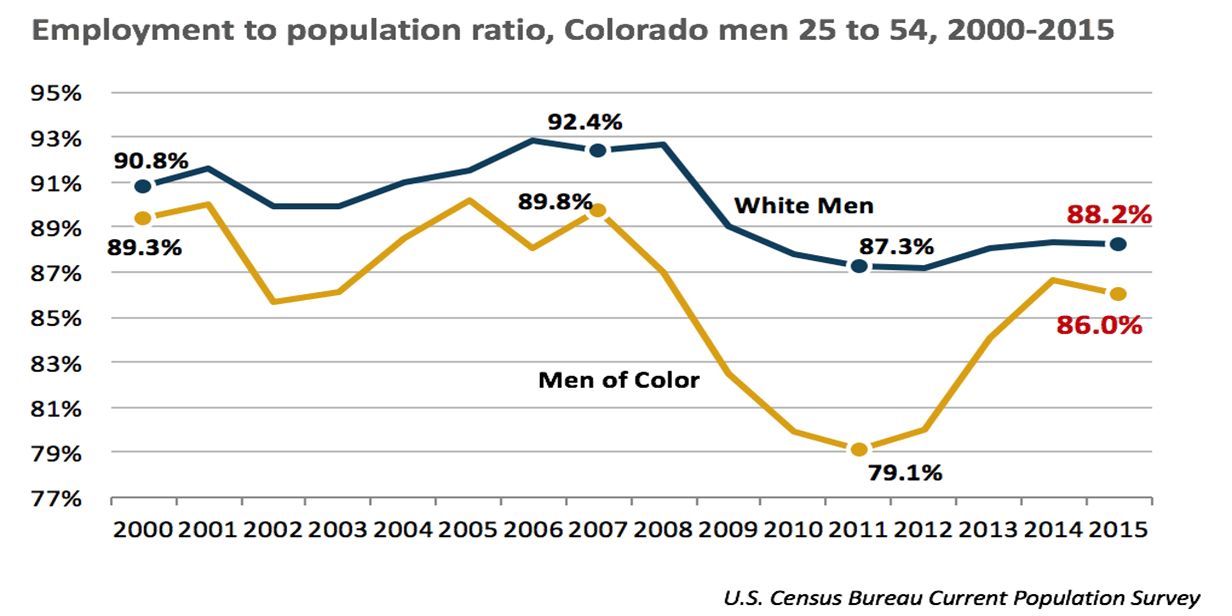Charlie Kestler, one of CCLP’s Policy Fellows, provided testimony in support of Senate Bill 24-211, Adjustments to the Necessary Document Program. CCLP is in support of SB24-211, as it is one of our priority bills.
Recent articles
CCLP testifies in support of protections for DNC drivers
Charles Brennan provided testimony in support of House Bill 24-1129, Protections for Delivery Network Company Drivers. CCLP is in support of HB24-1129.
CCLP testifies in support of TANF grant rule change
CCLP's Emeritus Advisor, Chaer Robert, provided written testimony in support of the CDHS rule on the COLA increase for TANF recipients. If the rule is adopted, the cost of living increase would go into effect on July 1, 2024.
CCLP testifies in support of updating protections for mobile home park residents
Charles Brennan provided testimony in support of House Bill 24-1294, Mobile Homes in Mobile Home Parks. CCLP is in support of HB24-1294.
Working Colorado: Where are the men?

It’s one of the most compelling questions about our modern labor market. While jobs have returned since the recession and unemployment is low, it is clear that not all workers have returned to work. And the people most prominently missing from the labor force are men.
Yet, as with many challenges facing our post-recession economy, this problem has been building for decades. The percentage of prime working-age men employed or actively looking for work peaked at nearly 98 percent in 1954. Since the mid-1960’s, the labor force participation rate of men has steadily declined. Today, the figure sits at about 88 percent.
In Colorado, labor force participation of prime-working-age men dropped dramatically during the recession from 91.7 percent in 2007 to a low of 85.2 percent in 2011. Since then, the labor-force participation rate slowly approached its pre-recession levels. In 2015, the share of Colorado men engaged in the labor market was 87.6 percent — on par with the national rate.
Across the country, lower labor-force participation rates have affected men of all races and ethnicities. This is true in Colorado as well where labor-force participation is down for both white men and men of color. While men of color experienced a more substantial drop in labor force participation during the recession — falling a full 10 percentage points between 2007 and 2011 — these workers have returned to the labor force more quickly.
These trends are concerning. The absence of several thousand workers from the state economy — and upwards of 7 million non-working men nationwide — has enormous consequences for these men, their families and the economy as a whole. A smaller workforce results in an economy that grows more slowly. And having a substantial number of men leave the labor force during their prime earning years certainly does not bode well for the long-term health and well-being of our families and communities.
Falling labor-force participation is concentrated among less-educated men. The job market has changed most substantially for this group for a number of reasons, including:
- The trade deficit with China – – According to a recent report by the Economic Policy Institute, the growth in the consumer goods trade deficit with China since 2001 has resulted in a loss of 3.4 million blue-collar jobs nationwide, mostly in manufacturing. Job losses occurred across the country, including an estimated 62,000 jobs in Colorado (equivalent to about 2.5 percent of state employment). And the effect of the trade deficit with China is not limited to job losses. Competing with lower wage countries depresses wages and reduces bargaining power of millions of U.S. workers.
- The proliferation of automation – – The more recent threat to American jobs is not China or Mexico but rather the pace of automation. Recent research has concluded that automation has had a larger effect on job loss than globalization and that many of the jobs lost to China would have been eliminated by technological advances anyway. Another analysis estimated that about 13 percent of manufacturing job losses can be attributed to trade while the remaining losses can be explained by technological advances that replaced workers with machines.
These broad shifts in the American economy have contributed to the reduction in demand for lower skilled labor and lower earnings of less-educated men — factors that explain much of the decline in labor force participation. In Colorado, the median wage for men has remained flat since 2000.
Our economy is in transition. The number of well-paying jobs that don’t require post-secondary training or education has been declining for years. Meanwhile, the more rapidly growing jobs that are less threatened by automation – such as health care, education and administrative jobs — have traditionally been occupied by women.
Recent research indicates how men are coping with these economic shifts. Analysis by the American Enterprise Institute paints a startling picture of unemployed men becoming increasingly detached from civil society, spending much of their time watching television and playing video games. Other analysis points to a high level of physical and emotional health problems among less-educated, unemployed men.
Labor economists point to several ways we can ease the effect of these economic shifts for lower-wage, less-educated workers. Policies that include strengthening labor unions, investments in public sector infrastructure development jobs, higher minimum wage to lift the wage floor, a larger earned income tax credit, better connections to job training and re-training in growing fields, and policies that support work, such as paid sick leave.
-Michelle Webster





